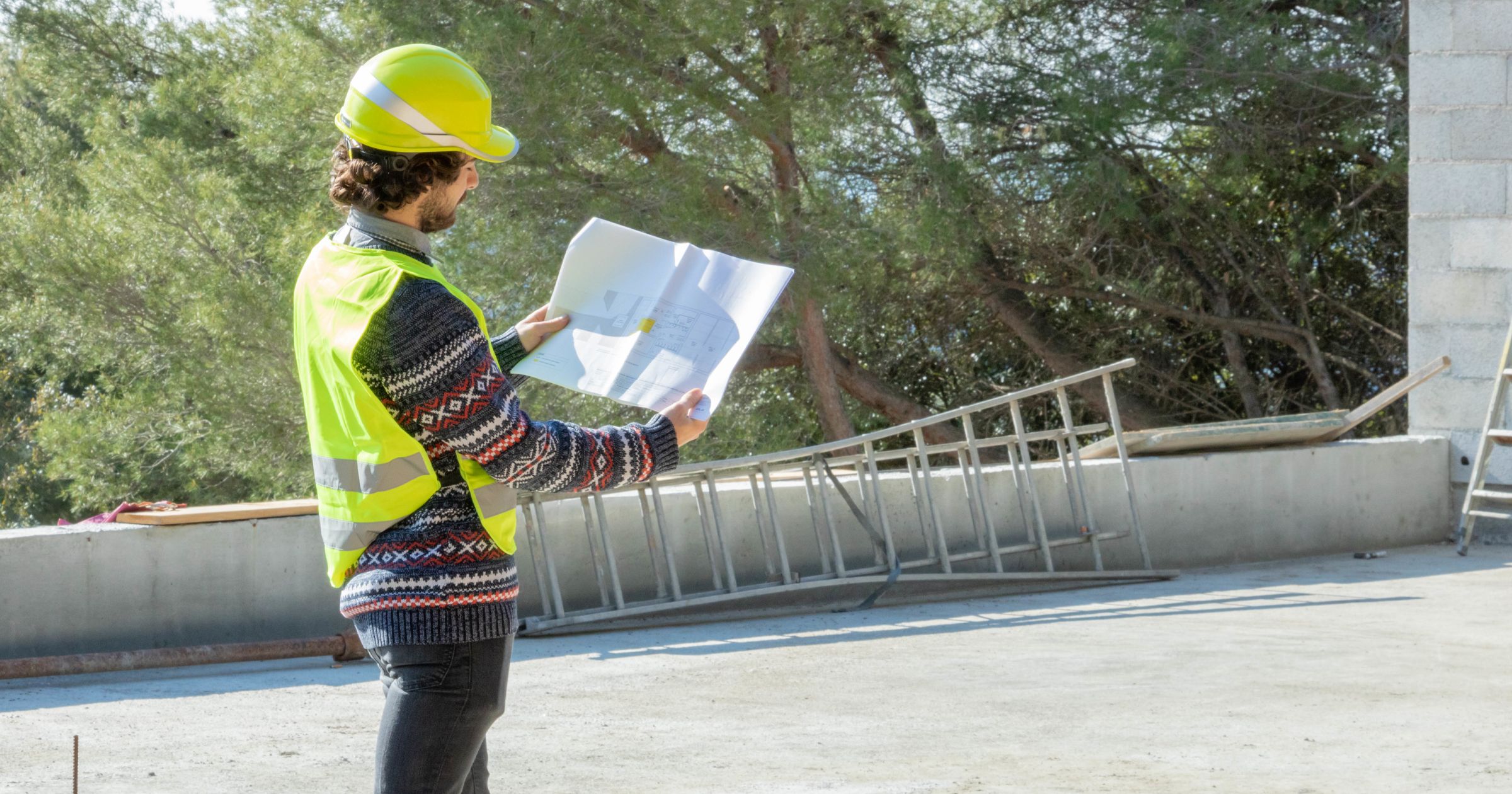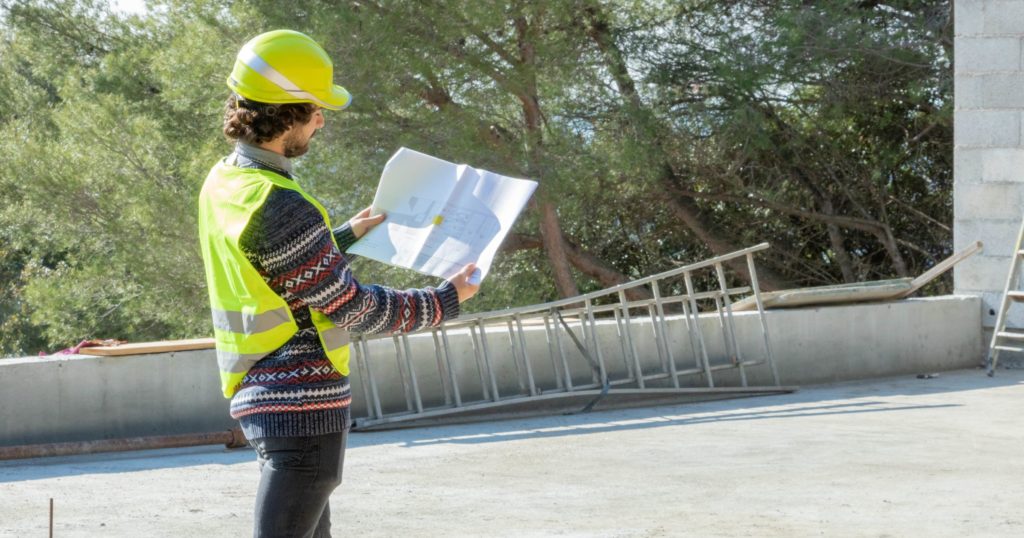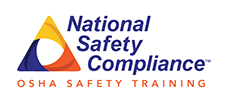
Ladder Safety Training Courses are Required for Many Businesses
The Importance of Ladder Safety Training Courses
Every employer should implement a ladder safety training certification program for their employees. In today’s world the ladder is looked at as a common tool, but it is just as important now more than ever, that it’s used correctly. According to the World Health Organization, over the past decade the number of people who have died from falls from ladders has tripled. More than 164,000 emergency room-treated injuries and 300 deaths in the U.S. from falling off a ladder.
There are several reasons why people are injured or killed each year as a result of accidents related to ladder usage. Some of the main causes include sliding off the ladder base or the ladder itself tipping sideways. Many people also sustain back injuries as a result of improperly carrying and setting up ladders.
At National Safety Compliance, we offer a number of different ways to train your employees on the safe use of ladders, including turn-key online training modules here on Online OSHA Training, as well as more traditional employer-led training programs available on DVD, USB, or Digital Access on OSHA-Safety-Training.net.

A Brief History of The Ladder
Employee ladder safety training is often overlooked. We forget the importance of many of the everyday objects we use. Cellphones, cars and electricity all revolutionized life as we know it, but there are many other objects that have done the same. The ladder is a great example of this. Before the ladder, the only access humans had to high places was with natural climbing provision, such as trees or vines, and their own height and power.
Ladders have evolved and changed a lot through the years, according to the varying needs and purposes they were created to fulfill. They were used throughout the Mesolithic era in Spain by fixing rungs directly to the tree to harvest honey. The Middle East and Northern Africa created a close model of the modern ladder to build the pyramids.
It wasn’t until 1862 that John H. Basely developed the first step ladder, unique from its predecessors because of its ability to stand freely and be easily stored and moved. Since then, we have seen a variety of new and innovative ladders hit the stores to fulfill different purposes and reach new heights.
Avoiding Ladder Accidents, Incidents, and Injuries
To avoid accidents and injuries anyone using a ladder should follow these top guidelines from the Occupational Safety & Health Administration (OSHA).
- Read and follow all labels/markings on the ladder.
- Avoid electrical hazards! – Look for overhead power lines before handling a ladder. Avoid using a metal ladder near power lines or exposed energized electrical equipment.
- Always inspect the ladder prior to using it. If the ladder is damaged, it must be removed from service and tagged until repaired or discarded.
While using a ladder, one should also always practice the three point-of-contact climb. This means at all times during ascent, descent and working you must face the ladder and have at least three of your limbs on the ladder (two hands and a foot or two feet and a hand) to minimize your chances of slipping.
Other things to keep in mind while climbing include not carrying anything in either hand, keeping the center of your stomach between the sides of the ladder, wearing clean slip-resistant shoes, and ensuring that you do not overreach and cause the ladder to tip.
Beyond these standards, it is important to always be mindful of the task and safety conditions you are dealing with while on the ladder. Because of the simplicity of ladders and the guidelines for using them, it is easy to become complacent and misuse a ladder.
Human factors like complacency, rushing, frustration, and fatigue can lead to series mistakes with serious consequences and injuries. This is why it’s so important to instill safety habits, not take any shortcuts and remember how dangerous ladders can be, regardless of how comfortable you feel after you begin to use them often.
The ladder itself is another important aspect to keep in mind. Selecting, inspecting, caring for, and properly using your ladder are all imperative to ladder safety.
Selecting your Ladder
To select the right ladder for you, keep in mind that your needed reach height determines the right size ladder. Many people often think their ladder will reach higher than it does and get hurt attempting to use the top as a step to take advantage of its full height.
You should also consider the purpose for which you will be using the ladder. The materials play into this a lot more than you would expect, for example fiberglass is known for maximum safety and durability whereas aluminum is often thought of as being stronger and lightweight.
There are ladders to reach every height and every tricky spot you can imagine. It is important to keep this in mind when purchasing or renting your ladder, instead of attempting to use a ladder for a project it is not capable of. Do your research to find the ladder that fulfills your requirements of anything from easy transportation to working on uneven ground or stairs. Your ladder should only be used for the job for which they were designed.
Types of Ladders
Step stool
Often thought of as the safest option for ladders, these are commonly used inside small office spaces and homes. They give you an extra foot or two of height, making them perfect for reaching the top shelf and performing household chores.
Step ladders
These are perfect for industrial tasks and most commonly seen inside homes for changing lightbulbs or dusting ceiling fans. They are inexpensive, easily stored and self-supporting, making them easily mobile anywhere you may need it.
Platform ladders
Although these look very similar to step ladders, they have features that allow for even more safety with a guard rail and platform that allows you to stand correctly and comfortably while working. This makes two handed projects that can often last for extended periods of time, like painting and repairing, a lot easier.
Multi-purpose ladders
With the ability to convert many positions, this ladder is known for its versatility and flexibility that allows you to safely and comfortably perform a variety of tasks. These are often used on construction sites by contractors.
Telescoping ladders
Great for storage purposes, these elongate to offer extra feet of climbing space. It is important to evaluate and analyze how these lock into place for safety purposes.
Extension ladders
Perfect for reaching greater heights, this ladder is extendable for each of your varying projects. Simply use a wall for support, firmly place the base on the ground and use the fly to extend the ladder depending on what height you need.
Flexible rope ladders
Unlike most other ladders that slide together or fold for storage purposes, these ladders are able to roll up. These are most commonly used for recreation purposes like climbing and exploring, as well as for emergencies such as needing to climb out a second story window or climb to a helicopter. It is important to note that these are not as easy to climb as cartoons make them look and do require a lot of upper body strength.
Portable ladders
These are most commonly used inside warehouses and stores for restocking shelves. They are a great option for storing things up high in various areas. If you decide to use one of these, be sure to anchor it down when working, attach a sign informing the public that it is for employee use only and use a chain to prevent unauthorized personnel from using it.

Inspecting Your Ladder
After you have purchased your ladder, it is always important to give it a proper inspection before use. Inspecting your ladder is vital because many accidents are caused by defective ladders. When inspecting your ladder, you should look for:
- Any corrosion of metal on your ladder
- Rot or decay in wooden equipment
- Damaged feet or faulty spreaders
- Missing identification labels
- Broken or worn rungs and side rails
- Loose or missing screws, bolts or hardware
Caring for Your Ladder
In order to prevent these things from happening to your ladder, there are some steps you can take to help care for your ladder and keep it in good condition. Proper ladder maintenance is essential for your safety.
First, you should never hang a ladder on rungs or store them with other materials on top of them, instead store them horizontally on racks. Wood and fiberglass ladders should not be kept in areas exposed to sunlight or dampness.
Beyond storage, you can also care for your ladder by properly securing and not allowing it to bump into other objects when in transit. It is also important to avoid painting the ladder as this will conceal any cracks and defects.
Knowing Your Ladder’s Limits
Ladders help us reach significant heights and accomplish many jobs that would otherwise be impossible, but it is important to note that even they have their limits. There are some jobs that a ladder simply cannot accomplish, so all users must recognize how much weight their ladder can handle, where it can be safely placed and used and what its strengths and weaknesses are.
The users themselves must recognize their own limits as well. Not everyone is comfortable using a ladder or strong enough to move one. Those who struggle with a disability, are overweight or would otherwise have difficulties maneuvering up and down the ladder may also be at a higher risk for injury.
Ladder Safety Training
According to OSHA, 100% of ladder related accidents could have been prevented using proper safety training. Learning and sharing more about ladder safety before using them can help you and your employees by preventing injuries.
Ensure you and others are putting safety first by training yourself on common hazards associated with ladder use, requirements and best practices for ladder safety.
What Does it Mean to be Certified in Ladder Safety?
Taking ladder training courses can separate your business from others. It allows you to take comfort in knowing your employees are trained and certified to prevent any accidents from occurring.
Your employees all have a wide range of knowledge and experience with ladders. Some may have grown up using ladders and others may have never used one before. Regardless, it is important that they all have a clear understanding of ladder safety guidelines for the workplace.
Ladder safety certificates ensure that your employees are educated and informed on how to properly use a ladder. Incorporating a ladder safety policy for your business can save you in the long run.

Benefits of Ladder Safety Training for Your Employees
Whether your employees use ladders at work often or not, it can be very beneficial to teach them ladder safety. Injuries at home, while not your responsibility, can lead to a lost-time injury. Delivering adequate training prevents accidents and ensures others have the proper knowledge to use ladders safely.
Employees who use ladders frequently at work feel more comfortable using them at home, this makes it especially important to ensure they are not growing complacent and making risky decisions against their better judgement and training.
As for employees who don’t use ladders on the job, it is still important that they receive training on ladder use and obtain some level of ladder knowledge to prevent any incidents in and out of the office. Keeping your employees working is always preferable to having them injured or, potentially making injury claims against you.
Following safety guidelines, developing a habit of safety and training others to do the same may seem time consuming, but taking a few extra steps before getting on a ladder can help you avoid serious, sometimes life altering injuries.
If you have any questions about ladder safety training programs, please don’t hesitate to reach out. You can contact us using the chat function on our site, e-mail us at sales@nscemail.com or call us at 877-922-7233.

